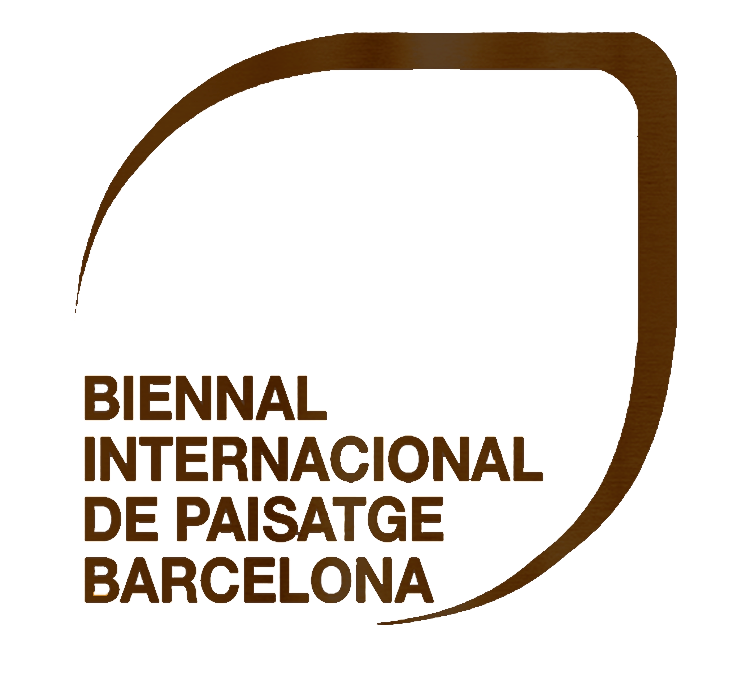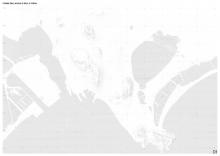
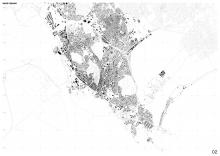
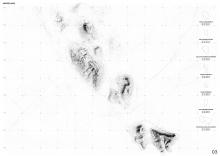
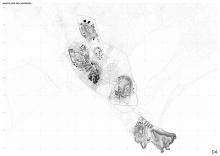
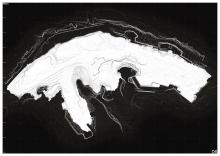
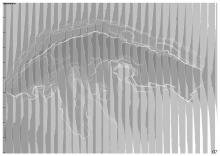
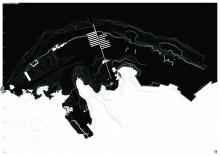
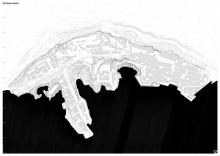
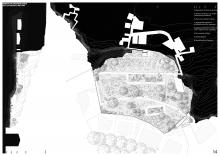
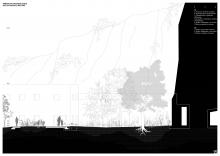
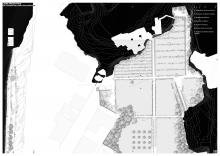
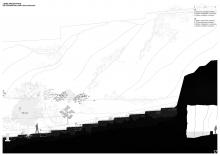
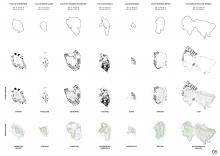
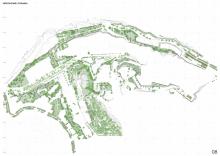
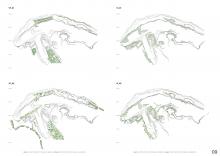
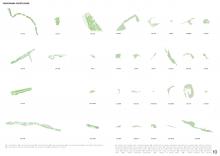
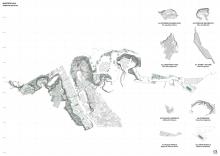
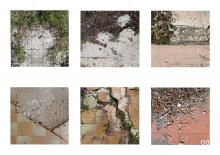
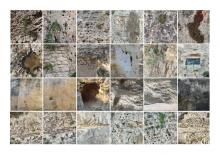
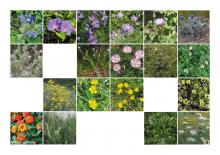
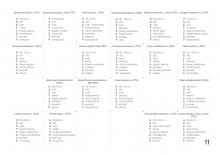

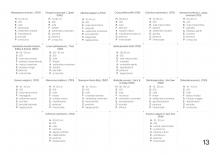
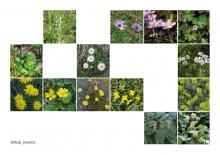
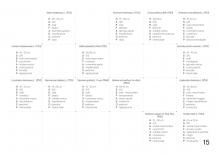
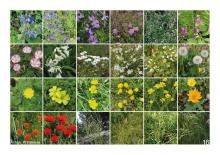
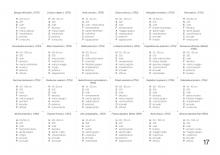
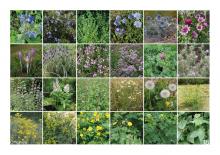
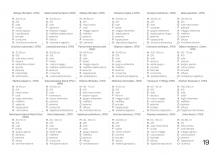
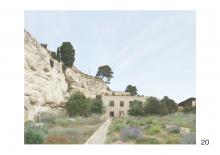
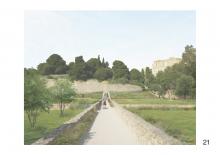
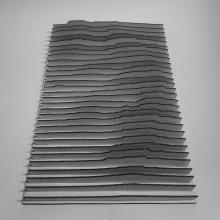
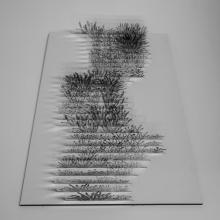
The sea, in its continuous motion, delimits and identifies the island, tracing its boundaries and defining its relationships. Similarly, the urban form identifies a morphological system within which a coastline unfolds: irregular, hollowed out, jagged, stratified, rich in coves, where the soil shape meets the city and where formal and informal systems are arranged over time. Through the landscape project, the thesis work explores the urban littoral of Cagliari’s central quarry system, following its course, reading its bends as places of tension and possibility, places where the wild spreads, where the urban retreats. Following these limits, through a coasting made of proximity and distance, new ecological potential is revealed, fragments of wild continuity that time has silenced, circumscribed, or overwritten. In this fragmented system, interpreting the tension generated between the wild dimension and that of the 19th-century formal garden, the thesis reasons out a new ecological continuity through the use of wildness, capable of making space in the residual component that the city offers and activating new ecological dynamics. A continuity that is not built by imposing connections, but by allowing the spontaneous conditions of the landscape of the quarry to suggest them.
